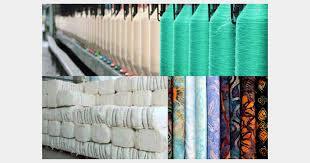NEW DELHI: India’s textile sector is preparing a growth strategy to realise the true potential of the readymade garment sector and achieve exports to the tune of USD 40 billion by 2030. Led by the Apparel Export Promotion Council (AEPC), the industry is looking to leverage the unique distinction of India’s apparel exports in its minimal import dependence and the sector’s strength of being amongst the largest producers of all kinds of fibre – natural and man-made – alongwith an abundant young workforce, to build an unparalleled ecosystem from fibre to fashion.
This year AEPC plans to participate in 17 international fairs across all continents. The new destinations that we are targeting this year are Saudi Arabia, Poland, Mexico, Brazil, South- Africa and Russia besides the traditional large countries like EU, USA and UK”. Riding on the huge success of the first edition of Bharat Tex in Feb 2024, it has been decided to further extend outreach to buyers across the world, through the second edition of Bharat Tex sometime early next year.
“The target of 40 billion USD by 2030 is eminently achievable and to achieve that goal there needs to be more and more engagement with the brands and buying houses which alone can create right perception among potential buyers about the industry’s readiness to meet various compliances,” Rohit Kansal, Addl Secretary, Ministry of Textiles, advised industry at an interaction organised by AEPC to reach out to foreign brands. The Government is also stressing on the need for scaling and increased investment in the sector to instill confidence in sourcing from India by all global brands as well as work on the perception of India’s manufacturing ecosystem in the world.
Sudhir Sekhri, Chairman AEPC is also planning to build step up engagements with retailers and brands of the likes of JCPenney, Gap, Levi’s from USA; EL Corte Inglés and Carrefour from Europe; Liverpool, Suburbia from South America; Kowa from Japan, etc. participated. According to Sekri, the GoI’s initiative in signing several meaningful FTAs in recent years is showing results as RMG exports have registered 16.8 per cent growth in Mauritius and 5.7 per cent in Australia, for the period April-February 2023-24, compared to the same period last year. Sekri expects the signing of FTA in the near future with the UK, which accounts for roughly 8 per cent of Indian apparel exports, to provide a much-needed fillip to the garment industry.
The Confederation of Indian Textile Industry (CITI) is also pushing for transformative change and collaborative action to gear up for a future that extends beyond the next five years, envisioning a thriving textile sector till 2047, the year marking “New India’s” fulfillment of aspirations. The sector’s recent lacklustre performance both domestically and in exports, has drawn attention to collaborative action and the industry is crafting an action plan not just for the immediate future but for the long haul till 2047, says Rakesh Mehra, Chairman of CITI. The Government has recently undertaken facilitation measures aimed at alleviating the burden on exporters, including provisions exempting inputs from mandatory Quality Control Orders (QCOs).
These exemptions will offer much-needed relief to exporters, laying a robust foundation for achieving the target of USD 100 billion textile and apparel exports by 2030. These initiatives are expected to expected to bring about USD 100 billion in investment and create over 15 million new jobs. However, to cater to such production targets, Mehra highlights the need to ensure sufficient availability of all types of raw materials including cotton and MMF at internationally competitive prices.
To improve the cost competitiveness of the cotton value chain, CITI has also called for removal of import duty from all varieties of cotton including cotton waste, exempting fibres and yarns not available domestically from the scope of QCO to ensure access to essential raw materials without regulatory issue and ensuring smooth supply of all raw materials at internationally competitive prices.

